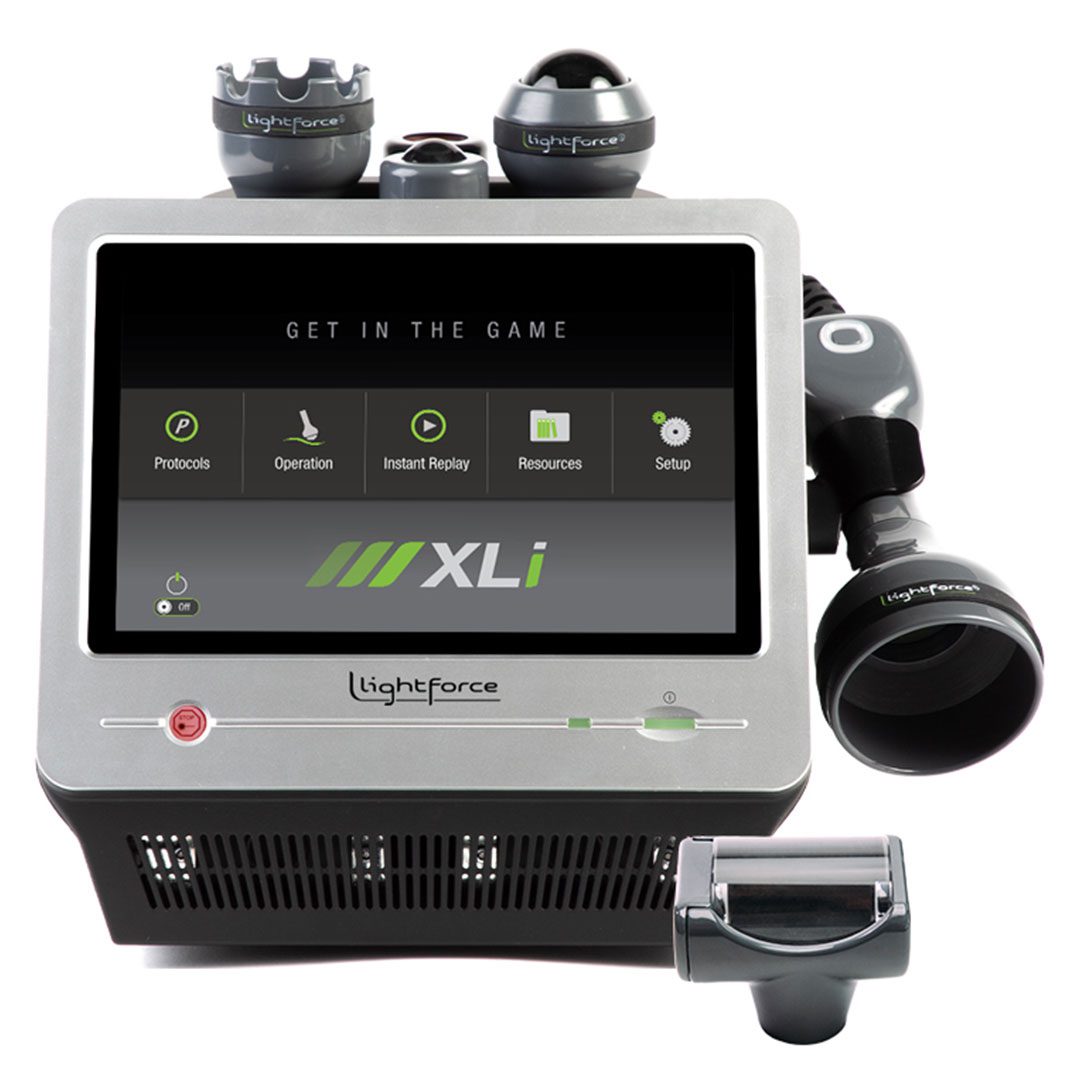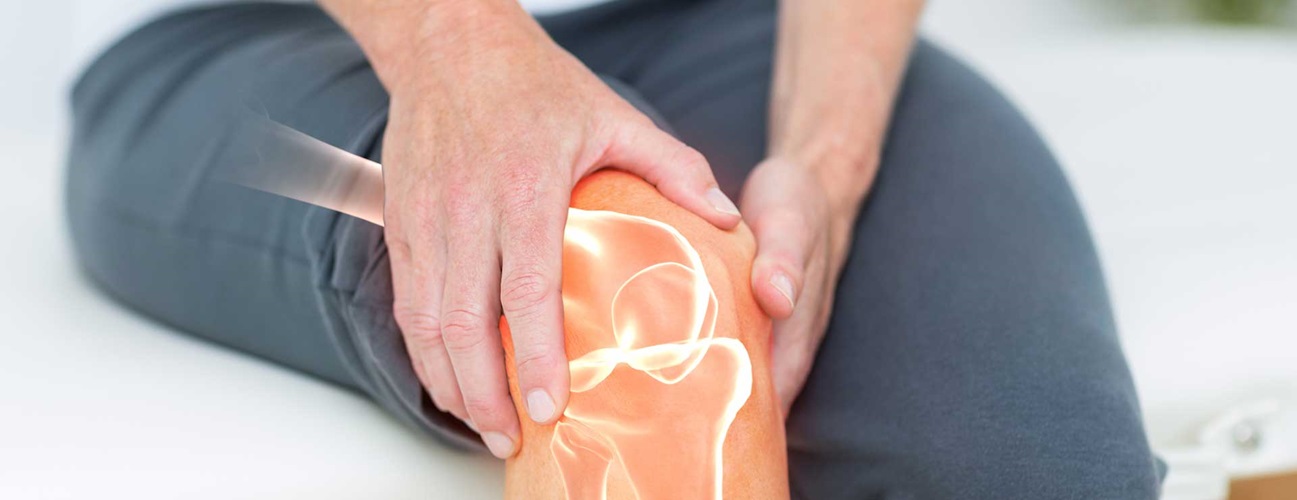DID YOU KNOW THAT THERE ARE MANY STAGES OF KNEE OSTEOARTHRITIS?
If you act early you can help prevent further damage to your joint!
There are many tissues in the knee that can generate pain during both the early and late stages of osteoarthritis (OA). including the meniscus, adipose tissue, synovium, and periosteum.1 During the early stages your cartilage starts to break down leading to inflammation in your joint that causes pain.
This process eventually causes cartilage surfaces to roughen and break off from the bone, exposing areas of the bone which have many sensory nerve receptors. When pressure is applied to this exposed area of bone, pain occurs. This process results in additional pain and inflammation as the body attempts to “clean up” the joint space.
In the later stages of OA, breaking down of the cartilage leads to degeneration of the joint surface, which can be accompanied by bone spur formation. At this stage, compression of the joint surface often becomes acutely painful and more invasive treatments are required to alleviate pain such as injections, arthroscopy, and potentially joint replacement surgery.1
When managing knee OA, it is important to promote early intervention to slow and/or avoid the late stages of degeneration as OA is a process, not just a diagnosis that results in a joint replacement surgery.
Click Here to start experiencing knee pain relief today!
Studies have shown that when joint inflammation and pain are addressed early on, there is a significant positive impact on joint health and longevity, improving joint mechanics, range of motion, strength, weight bearing tolerance, and functional mobility. When not managed early on, knee OA can impact quality of life and is associated with increased morbidity and mortality.2
Early intervention focuses on decreasing pain and improving function. Physical therapy intervention consisting of stretching and strengthening exercises has been shown to significantly benefit patients with knee OA3,4; however, the initial focus centers around reducing pain and inflammation. This is typically accomplished via oral medications that includes steroidal and non-steroidal anti-inflammatories (NSAIDS), opioids, acetaminophen, and interleukin-1 inhibitors.1 If unsuccessful, intra-articular injection of corticosteroids or hyaluronic acid may be introduced to further improve pain and function.
Due to the many unwanted side-effects of pharmaceuticals, patient’s and clinicians should be aware of modalities that are supported in the literature to help reduce synovial pain and inflammation. High-power Class 4 laser therapy can help by eliciting photobiomodulation in areas of damaged tissue and inflammation.
The most common symptoms of OA are inflammation and swelling of the synovia.6 High-power Class 4 laser therapy has the ability to quickly reduce pain via its impact on peripheral nerves, while providing lasting relief due to its ability to reduce inflammation.3,5,6 This non-invasive modality addresses pain in ways that other treatment options cannot.
Due to the high cost associated with Class 4 deep tissue laser therapy equipment, this treatment option is often overlooked and only used by professional and Olympic athletic teams.
Balance Solutions has invested in this equipment to provide our patients and community with this valuable treatment option, making Class 4 high-power laser therapy available to YOU in order to help manage OA and other conditions resulting in pain and inflammation!
Call (440) 449-3400 or click here to request a FREE Deep Tissue Laser Therapy demonstration or to schedule an evaluation today!

Click Here to learn more about photobiomodulation and how Deep Tissue Laser Therapy works!
References:
- International Association of Pain (IASP) 2010 Recommendations: Osteoarthritis Related Pain. https://s3.amazonaws.com/ rdcms-iasp/files/production/ public/Content/Content Folders/GlobalYearAgainst Pain2/MusculoskeletalPain FactSheets/ Osteoarthritis_Final.pdf
- Jordan KM, Arden NK, Bannwarth B, et al. EULAR Recommendations 2003: an evidence-based approach to the management of knee osteoarthritis: report of a task force of the standing committee for international clinical studies including therapeutic trials (ESCISIT). Ann Rheum Dis. 2003;62: 1145–1155
- Logerstedt D, Scalzitti DA, Bennell KL, et al. Knee pain and mobility impairments: meniscal and articular cartilage lesions revision 2018. Clinical practice guidelines linked to the international classification of functioning, disability and health. J Ortho Sports Phys Ther. 2018; Volume 48 Issue 2: A1–A50.
- American Academy of Orthopedic Surgeons. Treatment of osteoarthritis of the knee. Evidence-based guideline second edition. https://www.aaos.org/ cc_files/aaosorg/research/ guidelines/treatmento[1]fosteoarthritisofthekneeguide[1]pdf
- Alfredo PP, Bjordal JM, Dreyer SH, et al. Efficacy of low level laser therapy associated with exercises in knee osteoarthritis: a randomized double-blind study. Clin Rehab. 2012: 26523–26533.
- Justyna Wyszyn´ska J, Bal-Bochen´ska M. Efficacy of high-intensity laser therapy in treating knee osteoarthritis: a first systematic review. Photomed Laser Surg. Vol. 36, No. 7. Published online: 1 Jul 2018. https://doi.org/10.1089/ pho.2017.4425



